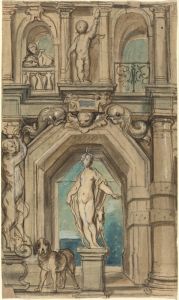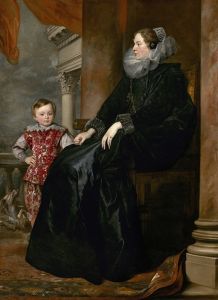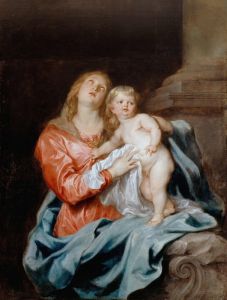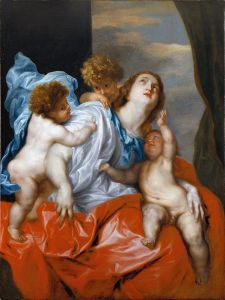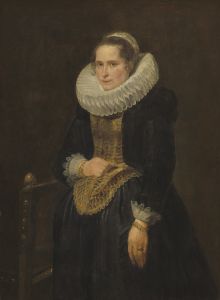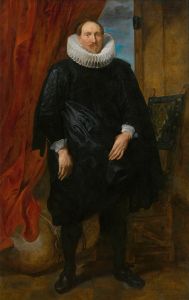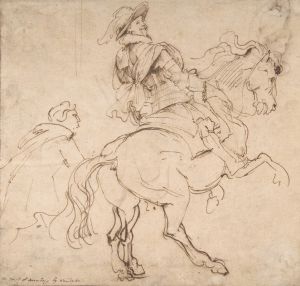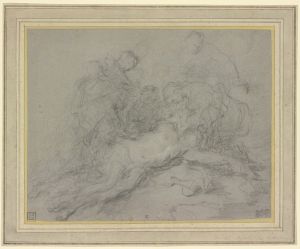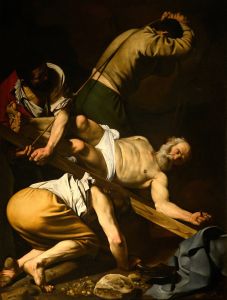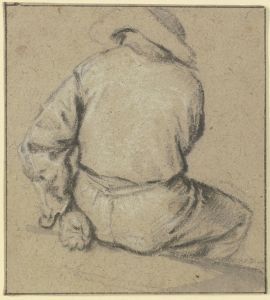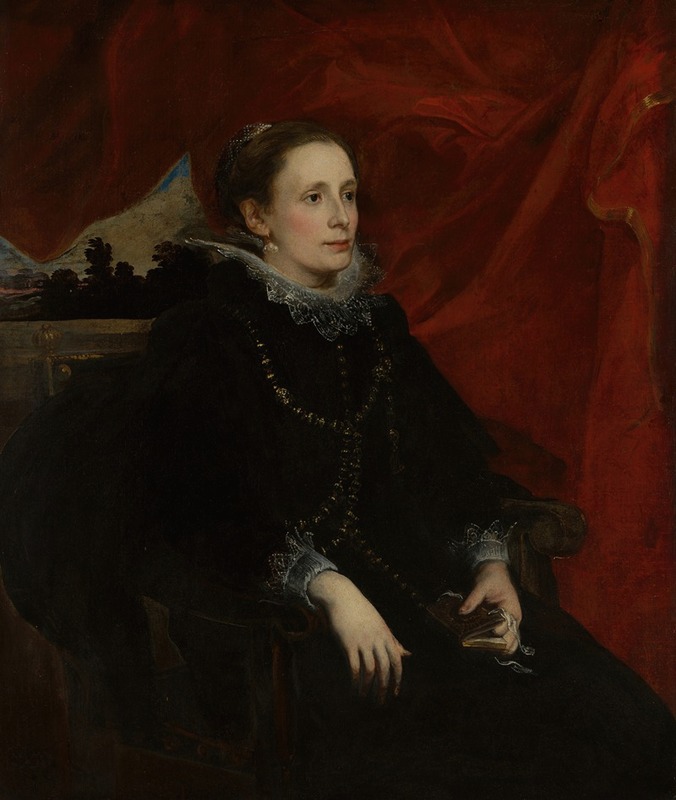
Portrait of a Woman, Called the Marchesa Durazzo
A hand-painted replica of Anthony van Dyck’s masterpiece Portrait of a Woman, Called the Marchesa Durazzo, meticulously crafted by professional artists to capture the true essence of the original. Each piece is created with museum-quality canvas and rare mineral pigments, carefully painted by experienced artists with delicate brushstrokes and rich, layered colors to perfectly recreate the texture of the original artwork. Unlike machine-printed reproductions, this hand-painted version brings the painting to life, infused with the artist’s emotions and skill in every stroke. Whether for personal collection or home decoration, it instantly elevates the artistic atmosphere of any space.
"Portrait of a Woman, Called the Marchesa Durazzo" is an exquisite painting by the renowned Flemish Baroque artist Anthony van Dyck. Van Dyck, a prominent figure in 17th-century European art, was celebrated for his portraits, which were characterized by their elegance, sophisticated composition, and the insightful portrayal of his subjects' personalities and social status.
This particular painting is believed to have been created during Van Dyck's Italian period, which spanned from 1621 to 1627. During this time, Van Dyck traveled extensively throughout Italy, absorbing the influences of the Italian masters and refining his own style. His work from this period reflects a blend of the Flemish attention to detail and the Italian emphasis on grandeur and drama.
The subject of the painting, referred to as the Marchesa Durazzo, is depicted with the grace and poise typical of Van Dyck's portraits. The identity of the sitter is not definitively established, and the title "Marchesa Durazzo" is based on historical attributions rather than concrete evidence. The Durazzo family was a prominent noble family in Genoa, and it is possible that the sitter was a member of this influential lineage, though specific details about her identity remain elusive.
In the portrait, the woman is elegantly dressed, her attire reflecting the fashion and opulence of the Italian aristocracy during the Baroque period. Van Dyck's skillful use of color, light, and shadow enhances the texture of the fabrics and the luminosity of her skin, creating a lifelike representation that captures the viewer's attention. The background is typically subdued, a technique Van Dyck employed to ensure the focus remained on the sitter.
Van Dyck's portraits are renowned for their psychological depth, and this painting is no exception. The Marchesa's expression is serene yet introspective, suggesting a sense of dignity and self-awareness. Her gaze, directed slightly away from the viewer, adds an element of mystery and allure, inviting speculation about her thoughts and emotions.
The painting exemplifies Van Dyck's mastery in portraying the aristocracy with both realism and idealization, a balance that made his work highly sought after by the European elite. His ability to convey the social status and inner character of his subjects helped establish his reputation as one of the leading portraitists of his time.
"Portrait of a Woman, Called the Marchesa Durazzo" is housed in the collection of the National Gallery of Art in Washington, D.C. It remains an important example of Van Dyck's work and a testament to his enduring influence on portrait painting. The painting continues to be studied and admired for its artistic merit and its contribution to the understanding of Baroque portraiture.





